Written by Bradt Travel Guides
Situated in the southernmost region of Greece’s mainland, the Peloponnese offers far more than sea and sand. It is home to some of the world’s most precious Classical remains – magnificent temples, outstanding amphitheatres and ruined walls are the order of the day. The region has dozens of impressive sites; it is difficult to pick which ones to visit, so we’ve drawn up a list of our favourites.
1. Olympia
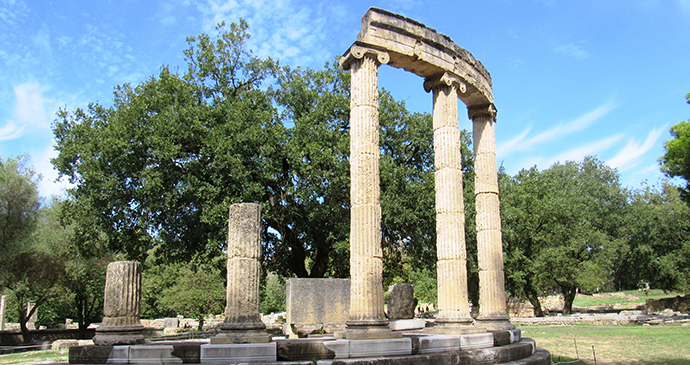 The first building you see of note in Olympia is the partially restored Philippeion © Pan.stathopoulos, Wikimedia Commons
The first building you see of note in Olympia is the partially restored Philippeion © Pan.stathopoulos, Wikimedia Commons
It is hard to ignore the atmosphere of Olympia. This famous site, set in a peaceful river valley, saw the ancient athletic games take place for more than 1,000 years. At its height the games attracted thousands of spectators, hailing from every corner of the Mediterranean. They didn’t come only for the sport; Olympia was also a place where poets and musicians could display their talents to the widest crowd possible. Imagine if the modern games were combined with Glastonbury and the Cannes Film Festival, and then took place in the Vatican! Today, the modern Olympic torch is still lit on this site every four years, and carried by relay to the host city. A visit to Olympia must take in the stadium itself, as well as the Temple of Zeus, which once housed the 12m-high Statue of Zeus, one of the Seven Wonders of the Ancient World.
2. Mystra
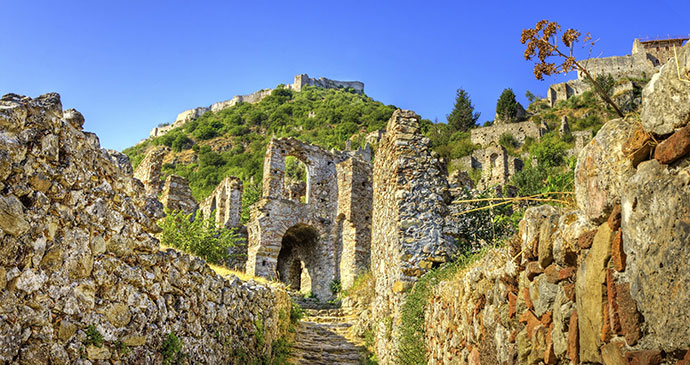
Many visitors are surprised by the exquisite beauty of Byzantine churches. This ghost town, in the foothills of the Taygetos Mountains, is full of them. Take a day to explore the ruined city of Mystra, the old Byzantine capital of Morea, with its lanes and alleyways, palaces, castle and, above all, churches. A trip to the very highest point of the castle walls leads you to a throne-like seat where, if you are brave, you can sit in isolated splendour with the landscape stretching out below in an unbroken sweep. It is a magical spot.
3. Epidavros
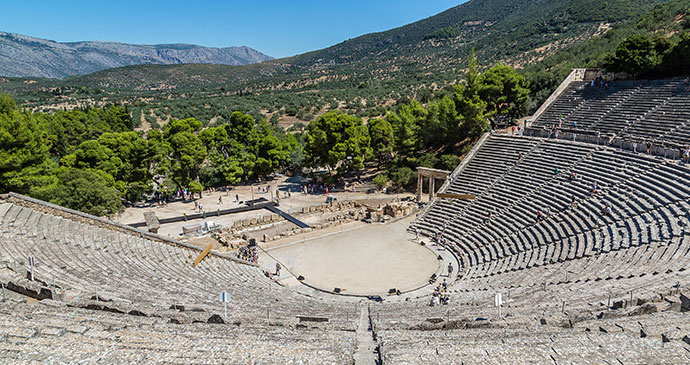
One of the most famous surviving theatres in the Classical world stands at Epidavros, and tourists flock to take in its impressive surroundings. If you hang around long enough, an obliging tour guide will demonstrate its wonderful acoustics for you. They are so good it is possible to hear the action on stage from any seat in the stands, right up to the last tier. A visit to this well-known site wouldn’t be complete without viewing the rest of the ruins, including the sanctuary, dedicated to Asklepius, the god of medicine and healing. The careful work of restoring this place of healing continues today, and, if you’re lucky, you might glimpse the dedicated craftsmen hard at work at this task in the restoration workshops.
4. Mycenae
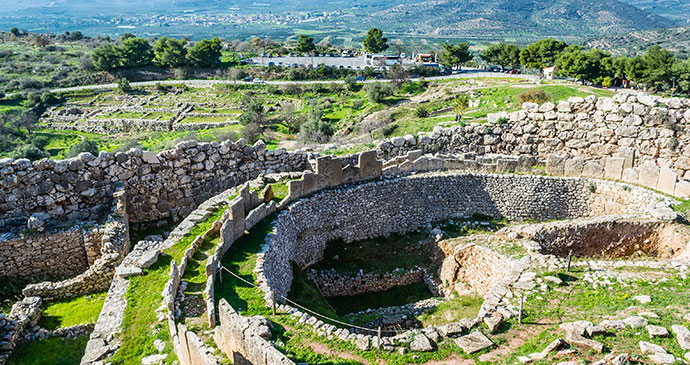
A monumental structure of stone perched on a triangular ridge slung between two mountains, Mycenae is set against a stunning backdrop. As you tour the imposing citadel, take a minute to appreciate the spectacular views. The decline and disappearance of the Mycenean civilisation in the 13th century BC is a mystery. Many sites, including Mycenae, saw an increase in the building of defensive measures at this time, alluding perhaps to an external threat or some kind of civil war, but the real truth of what happened to them remains hidden. The ruins they left behind date mostly from 1350–1200BC. As you walk through these dramatic remains, you can form your own theories about the mysterious past of this once-powerful civilisation.
5. Corinth
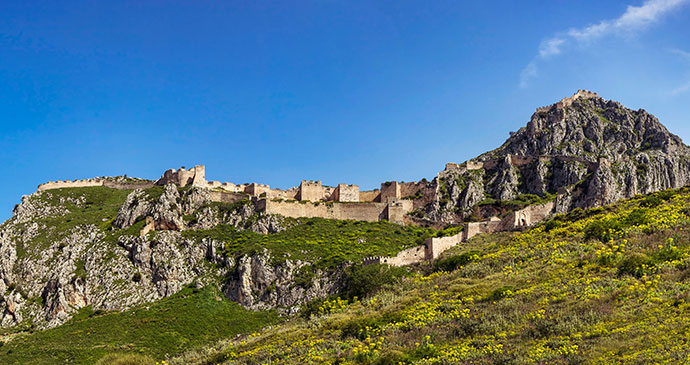
Corinth seems to have suffered from an excess of history, having been variously razed to the ground and then flattened by earthquakes on several occasions. This has led to the modern city being a rather uninspiring collection of low, concrete buildings. Standing by the thin isthmus that separates the Peloponnese from the rest of the mainland, Corinth is a rather off-putting introduction to the region. Don’t be fooled by the unattractive streets of the main town – look beyond the concrete and you will find the site of the old Roman town, where you can tread the same streets as St Paul. Above it, the imposing bulk of Acrocorinth, its hilltop fortifications visible as you approach the isthmus, is a more than worthy guardian to the secret delights of the Peloponnese.
For more on these ancient sites and others in the region, see our guide to the Peloponnese:

